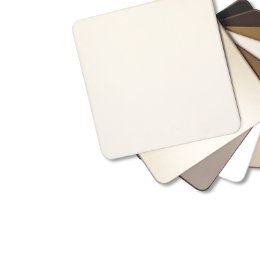Specifying MCM

Writing a specification can be difficult. Trying to interpret one can sometimes be harder. Even when starting with an in-house template or using a “canned” spec from a manufacturer, there are often questions or trouble areas that pop up with regularity. To help bridge the gap between what specifiers are asking and what contractors are interpreting, Jim Moses, technical services manager for Chesapeake, Va.-based Mitsubishi Chemical America, maker of ALPOLIC metal composite materials (MCM), offers the following most common specification pitfalls as well as suggested ways to avoid them.
1. HOW MUCH INFORMATION DO YOU NEED ABOUT PAINT?
The problem: Paint is a perfect example of the common issue specifiers have when they include too much detail or not enough. Drilling down to the formula level often causes confusion, but so does not include enough information. The latter could open up the spec to products that do not perform as intended, inadvertently allowing products that may not perform as well as others.
The solution: Don’t get caught up in the details, but rather specify a recognized industry standard test that meets your requirements. For example, require an AAMA 2605-compliant paint system certified by the paint manufacturer. This ensures the products selected will meet the intent.
2. WHERE IN THE PRODUCT SPECIFICATION DOES THE MCM SPEC GO?
The problem: While there’s a tendency to include the specification of metal composite wall panel systems wherever it makes sense to the person writing the spec, it can make navigating the spec harder for those who’d put it elsewhere.
The solution: Go by the Construction Specifier Institute guidance. 07.42.13. Division 7: Thermal and Moisture Protection, section 42: Wall Panels, subsection 13: Metal Wall Panels. If you want to drill down even further, 23: Metal Composite Material Wall Panels.
3. UNDERSTAND THE FINAL PRODUCT INVOLVES MORE THAN ONE MANUFACTURER.
The problem: Architects writing specs speak collectively of the finished cladding system when there is likely a separate MCM manufacturer and cladding system manufacturer.
The solution: Designate performance requirements for entities independent of each other to ensure clarity. When it comes to the panel, what sort of color and warranty do you need? For the system, will it be a wet seal, dry seal or a form of rainscreen? Breaking out the components will also highlight when something is missing. For example, include the air/water barrier in a spec for a rainscreen system, a designation that is missed surprisingly often.
4. ALWAYS WRITE YOUR SPEC TO CODE.
The problem: Everyone, from the architect to the specifier to the general contractor, is responsible for adhering to local building codes. When it comes to building safety, an ambiguous or poorly written spec is unacceptable.
The solution: MCM should meet the Class A standard under ASTM E84. These materials are compliant for buildings under 40 feet from grade. Buildings above 40 feet are required to pass NFPA 285. This wall assembly test requires that all components must be tested together to ensure compliance. Follow the code and do not accept anything less than strict code compliance.
5. ASK MORE FROM YOUR WARRANTY.
The problem: Without clear parameters for what you expect from your products, you may get stuck with materials that just don’t perform.
The solution: Ask and you shall receive. It isn’t enough to say that panels should have 10-year warranties and their paint finishes should be warrantied for 20 years. Warranties aren’t just about time, they are also about performance. Specify a repair and replace warranty; that paint should not exceed a ΔE5, chalking at no more than 8, gloss loss no more than 40 percent.
A specification should be an encompassing document, made to clearly articulate what an architect expects from his or her building. The document should function as a road map to bring that vision to life. Use these tips to create a better spec.
Jim Moses is the technical services manager for Chesapeake, Va.-based Mitsubishi Chemical America's (MCA) ALPOLIC MCM division. He has more than 40 years in the construction manufacturing, engineering and operations field, and is an active member of industry associations.






